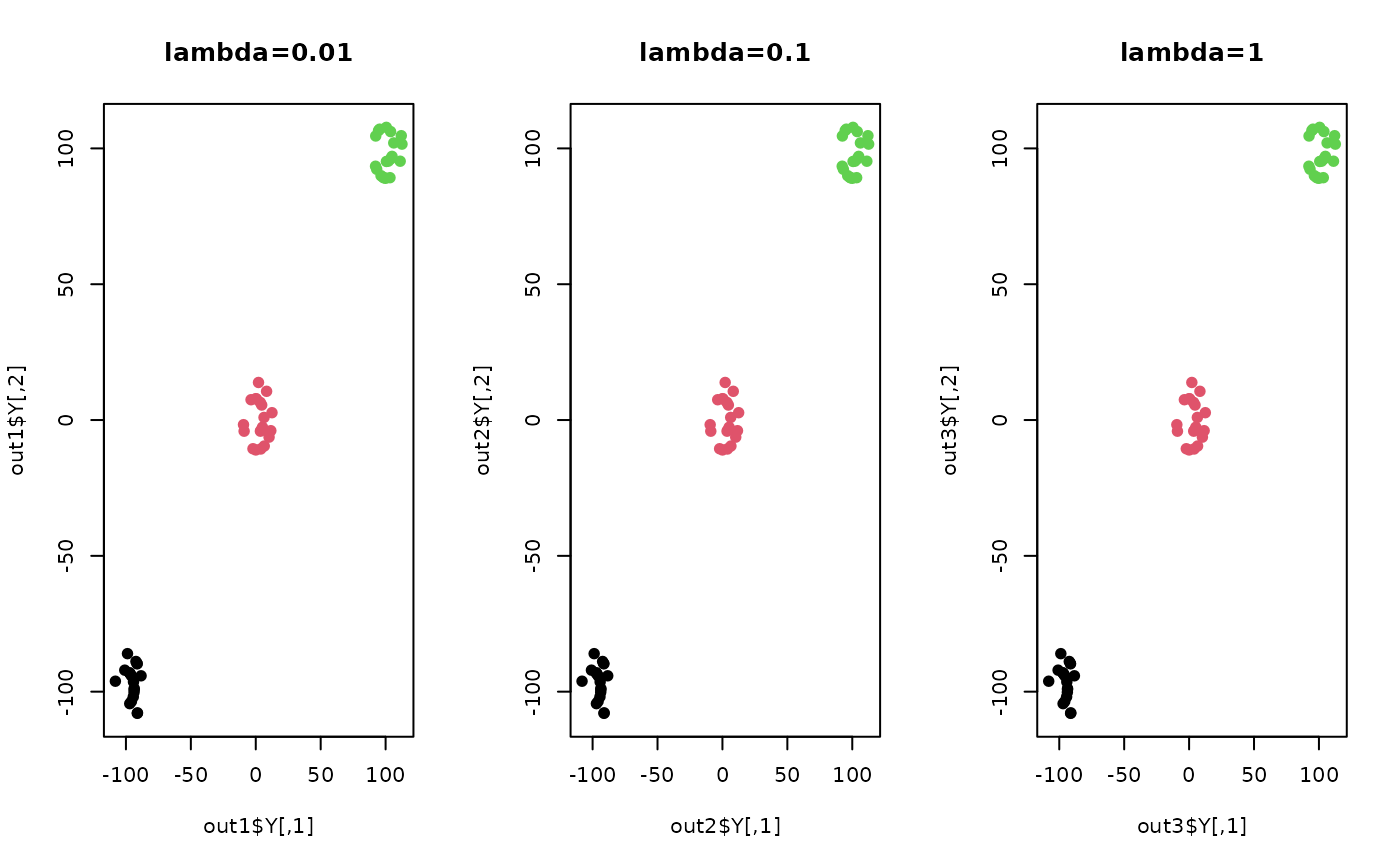Multi-Cluster Feature Selection (MCFS) is an unsupervised feature selection method. Based on a multi-cluster assumption, it aims at finding meaningful features using sparse reconstruction of spectral basis using LASSO.
Arguments
- X
an \((n\times p)\) matrix or data frame whose rows are observations and columns represent independent variables.
- ndim
an integer-valued target dimension.
- type
a vector of neighborhood graph construction. Following types are supported;
c("knn",k),c("enn",radius), andc("proportion",ratio). Default isc("proportion",0.1), connecting about 1/10 of nearest data points among all data points. See alsoaux.graphnbdfor more details.- preprocess
an additional option for preprocessing the data. Default is "null". See also
aux.preprocessfor more details.- K
assumed number of clusters in the original dataset.
- lambda
\(\ell_1\) regularization parameter in \((0,\infty)\).
- t
bandwidth parameter for heat kernel in \((0,\infty)\).
Value
a named list containing
- Y
an \((n\times ndim)\) matrix whose rows are embedded observations.
- featidx
a length-\(ndim\) vector of indices with highest scores.
- trfinfo
a list containing information for out-of-sample prediction.
- projection
a \((p\times ndim)\) whose columns are basis for projection.
References
Cai D, Zhang C, He X (2010). “Unsupervised Feature Selection for Multi-Cluster Data.” In Proceedings of the 16th ACM SIGKDD International Conference on Knowledge Discovery and Data Mining, 333--342.
Examples
## generate data of 3 types with clear difference
dt1 = aux.gensamples(n=20)-100
dt2 = aux.gensamples(n=20)
dt3 = aux.gensamples(n=20)+100
## merge the data and create a label correspondingly
X = rbind(dt1,dt2,dt3)
label = rep(1:3, each=20)
## try different regularization parameters
out1 = do.mcfs(X, lambda=0.01)
out2 = do.mcfs(X, lambda=0.1)
out3 = do.mcfs(X, lambda=1)
## visualize
opar <- par(no.readonly=TRUE)
par(mfrow=c(1,3))
plot(out1$Y, pch=19, col=label, main="lambda=0.01")
plot(out2$Y, pch=19, col=label, main="lambda=0.1")
plot(out3$Y, pch=19, col=label, main="lambda=1")
 par(opar)
par(opar)